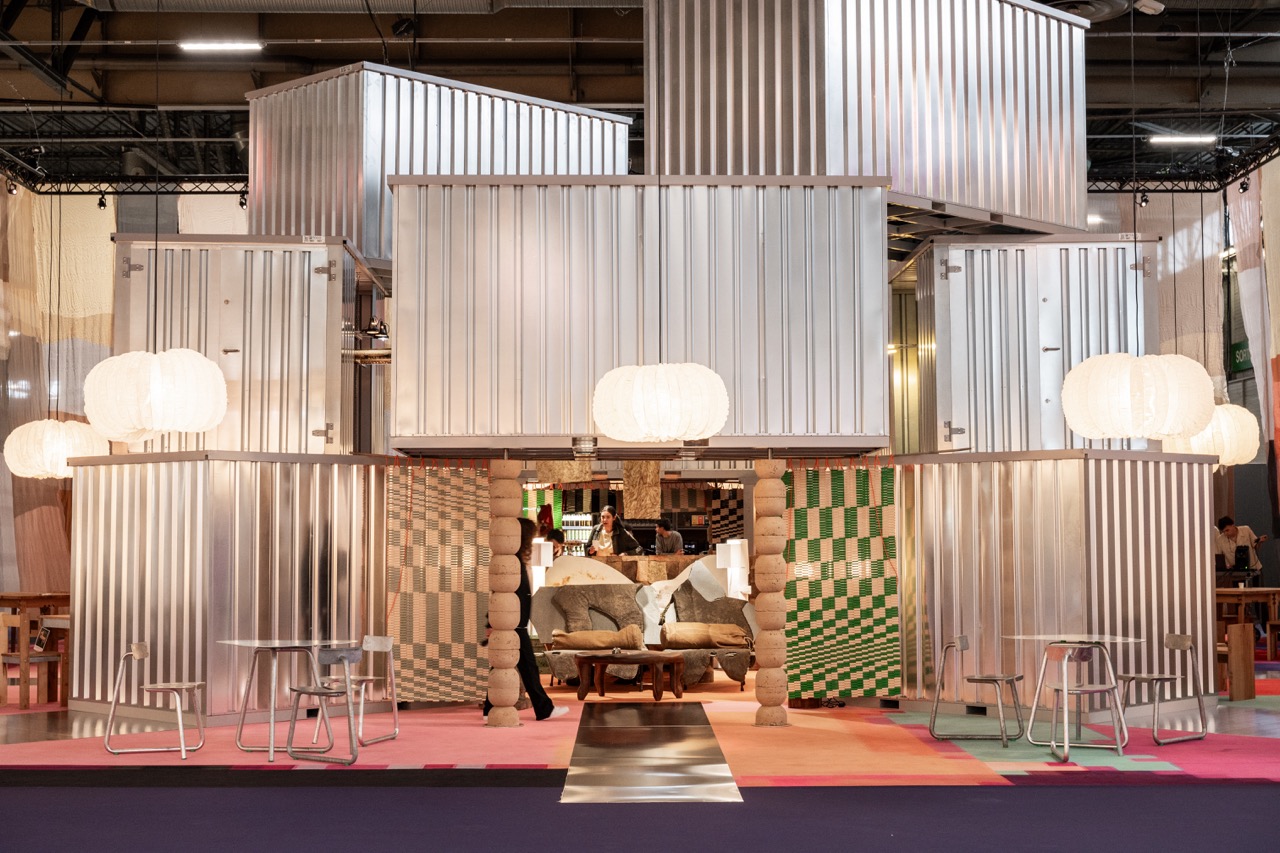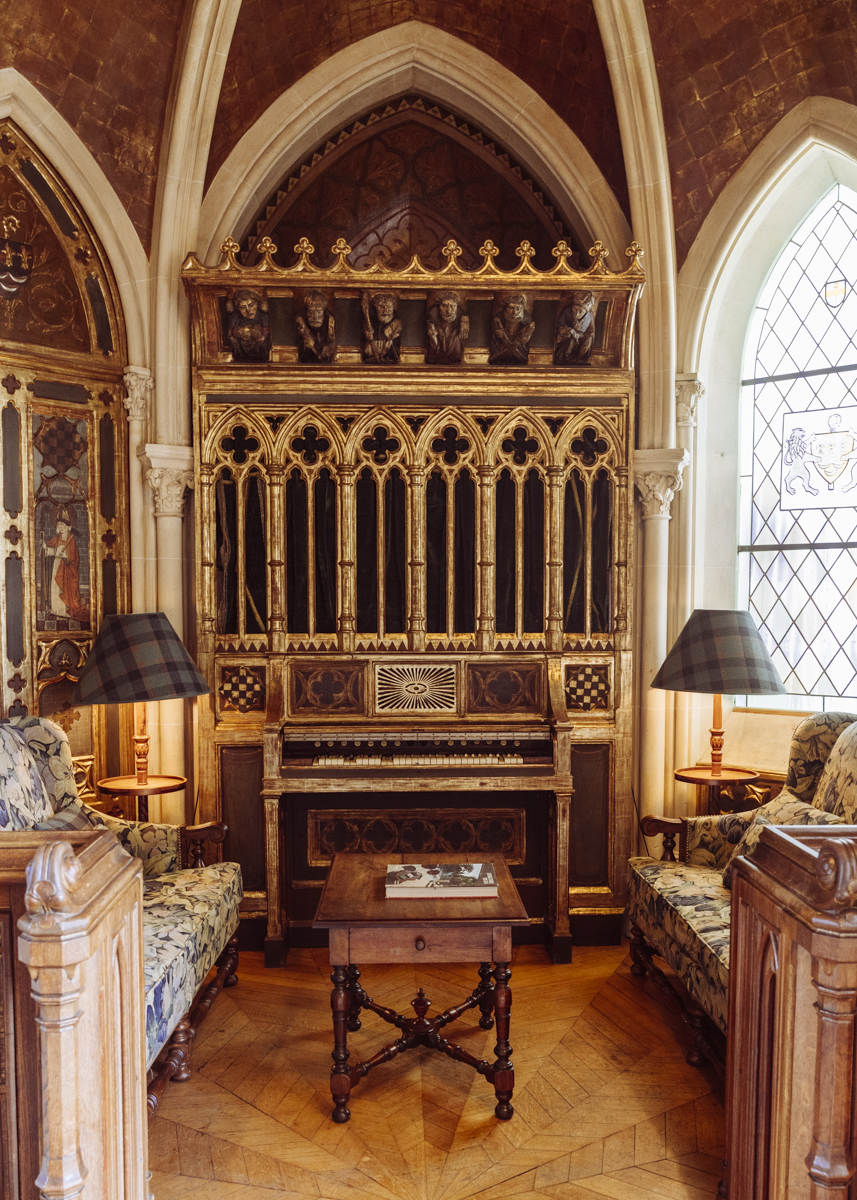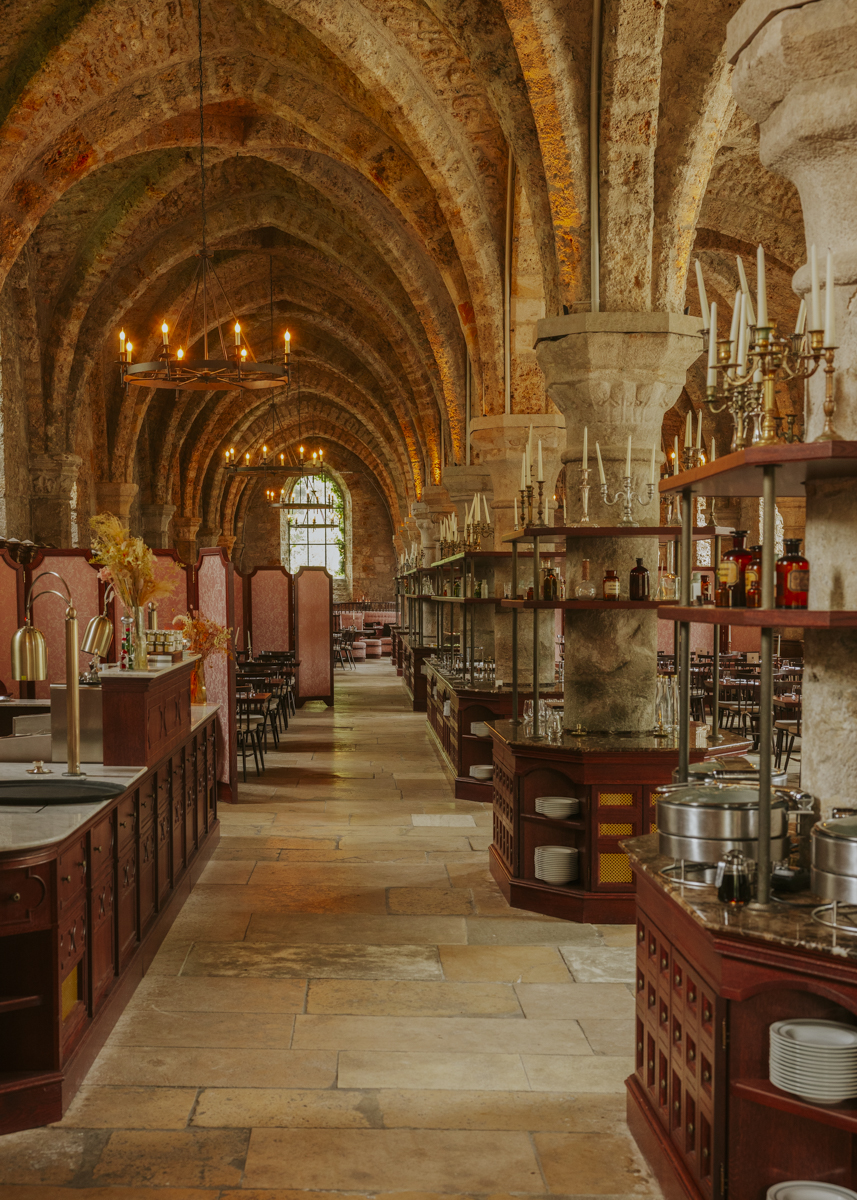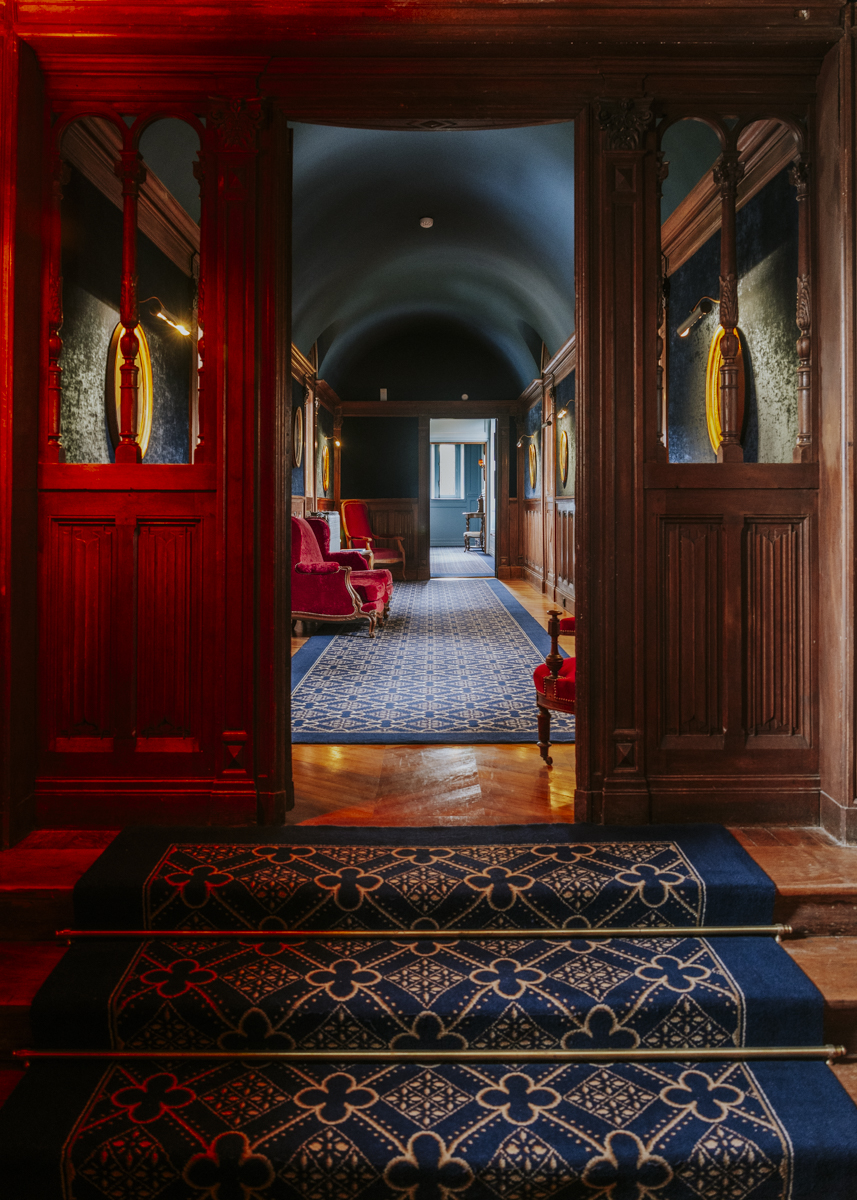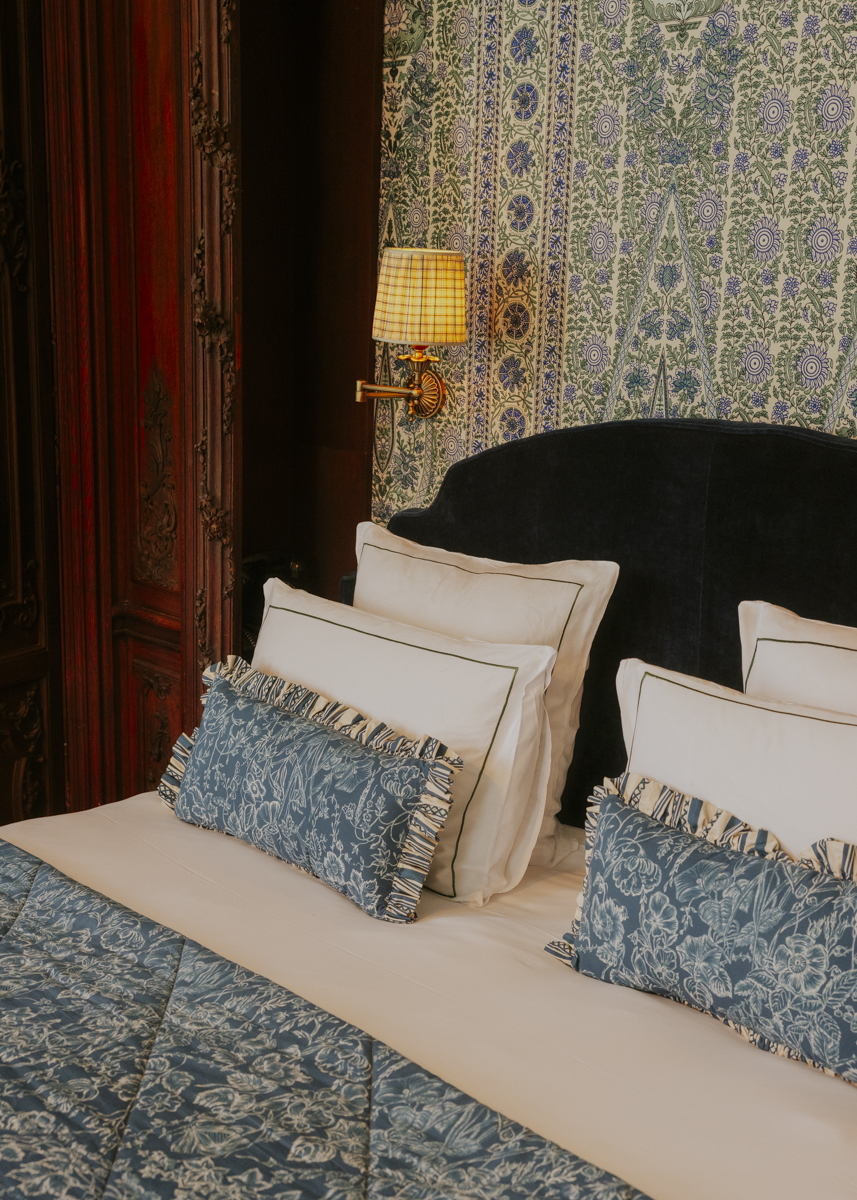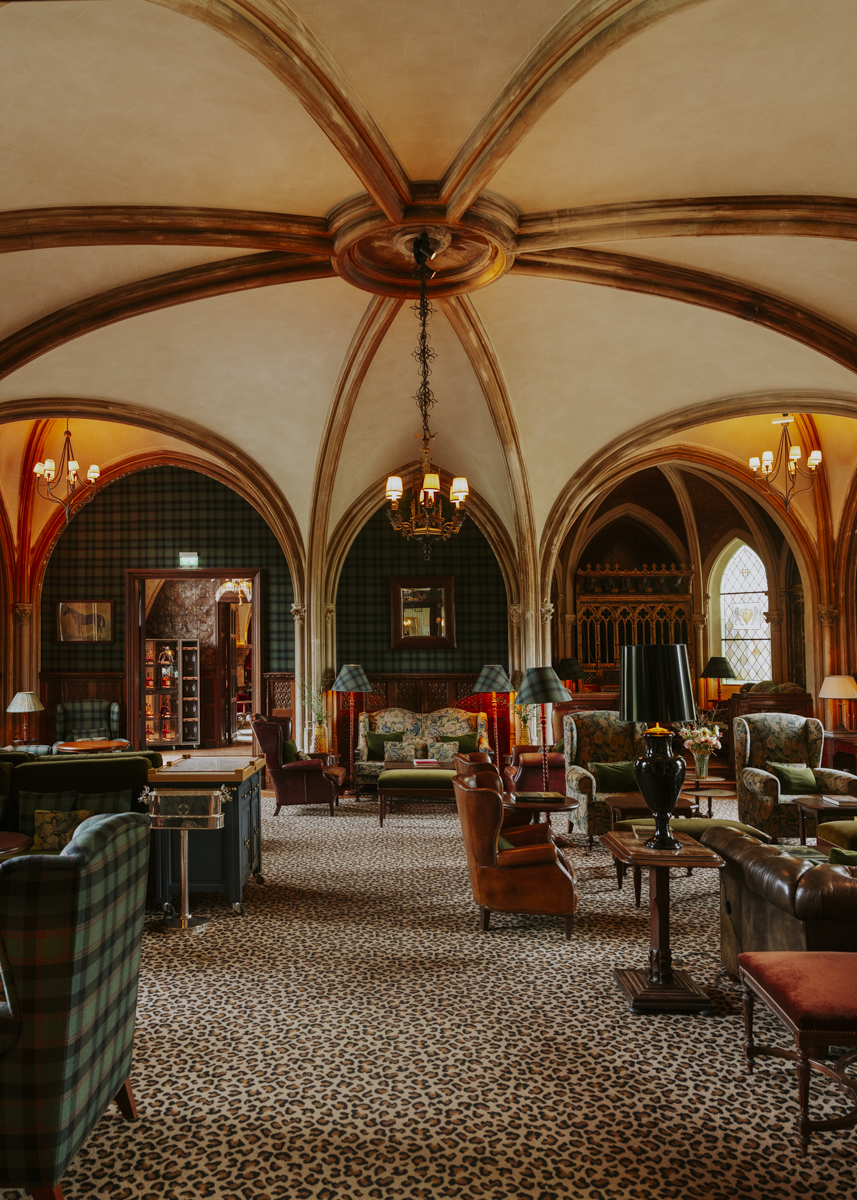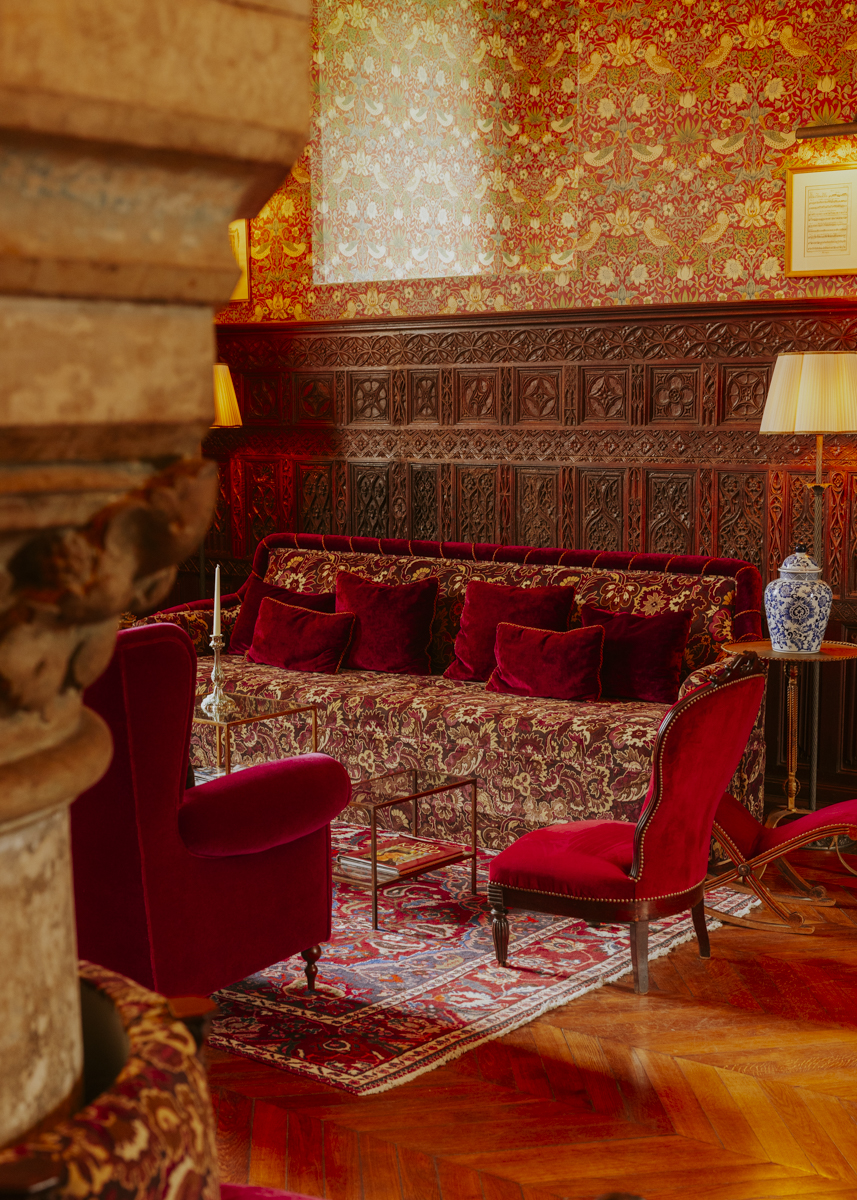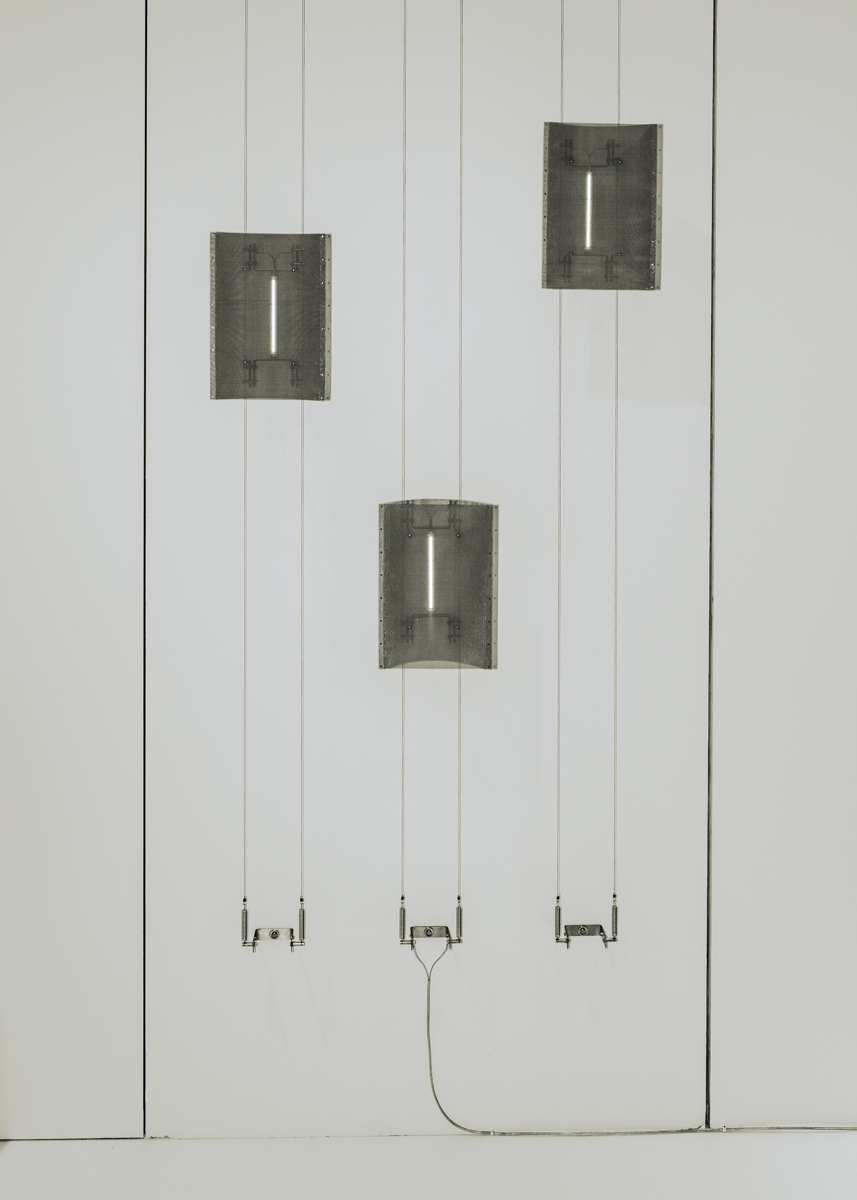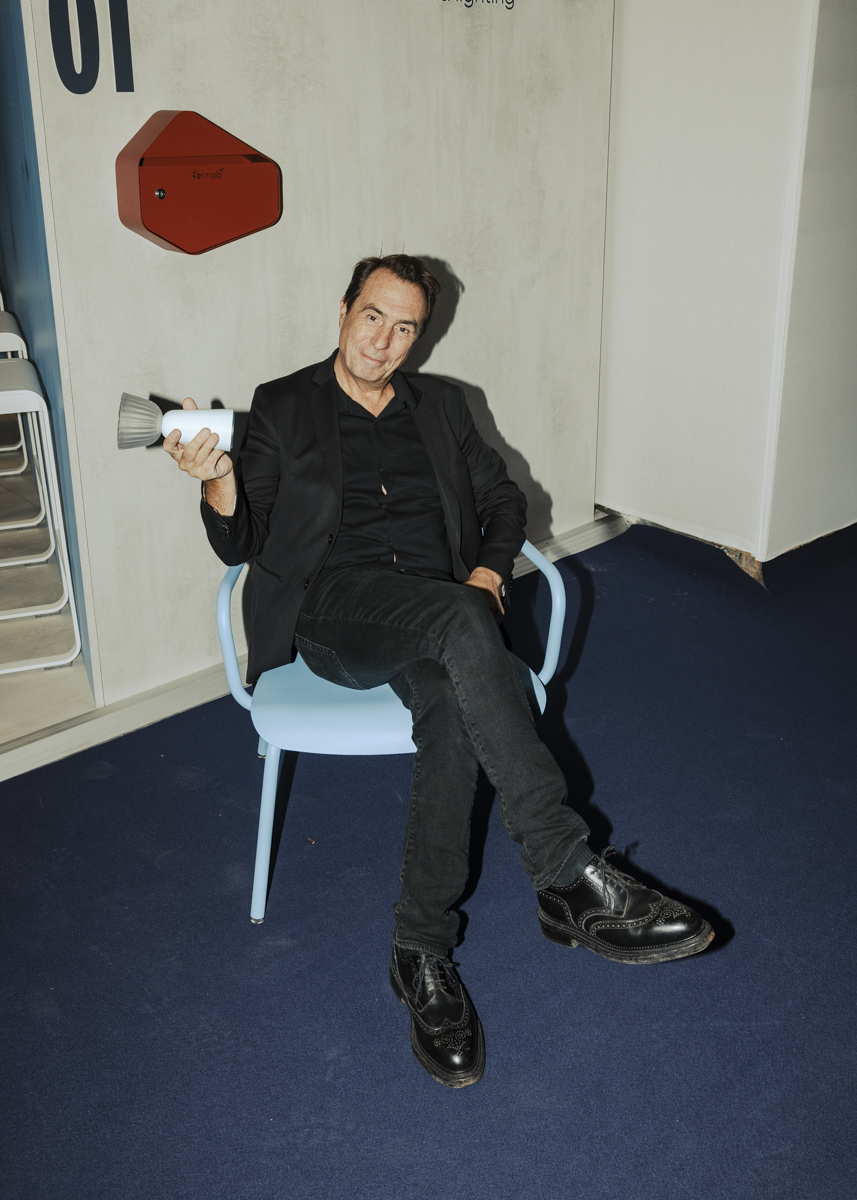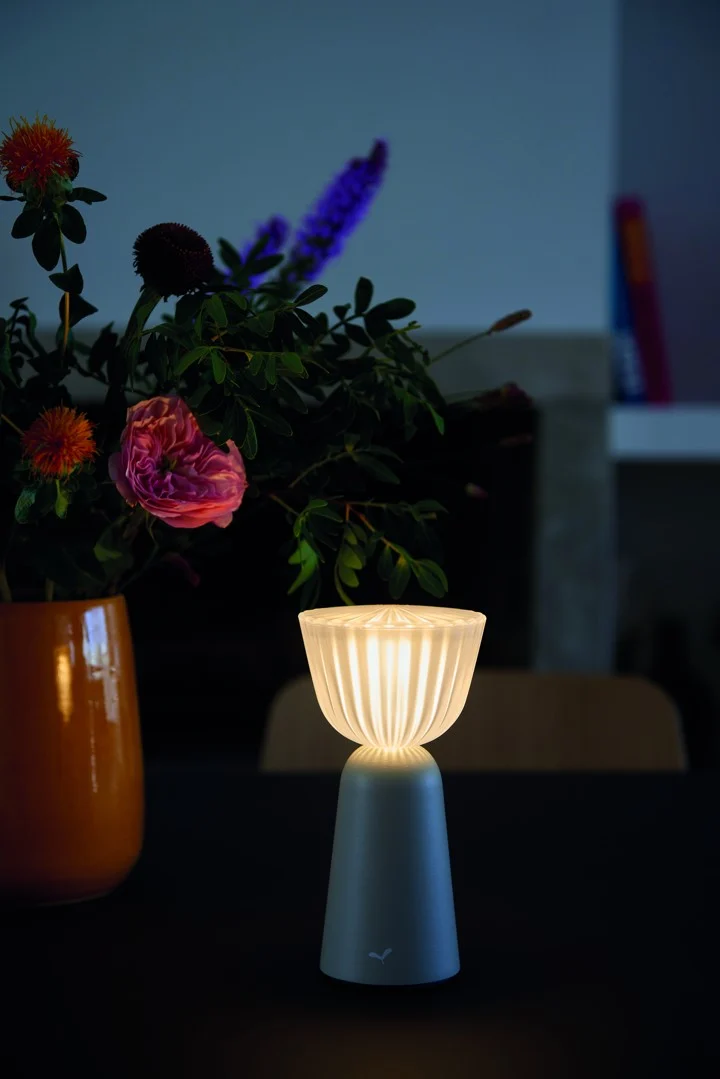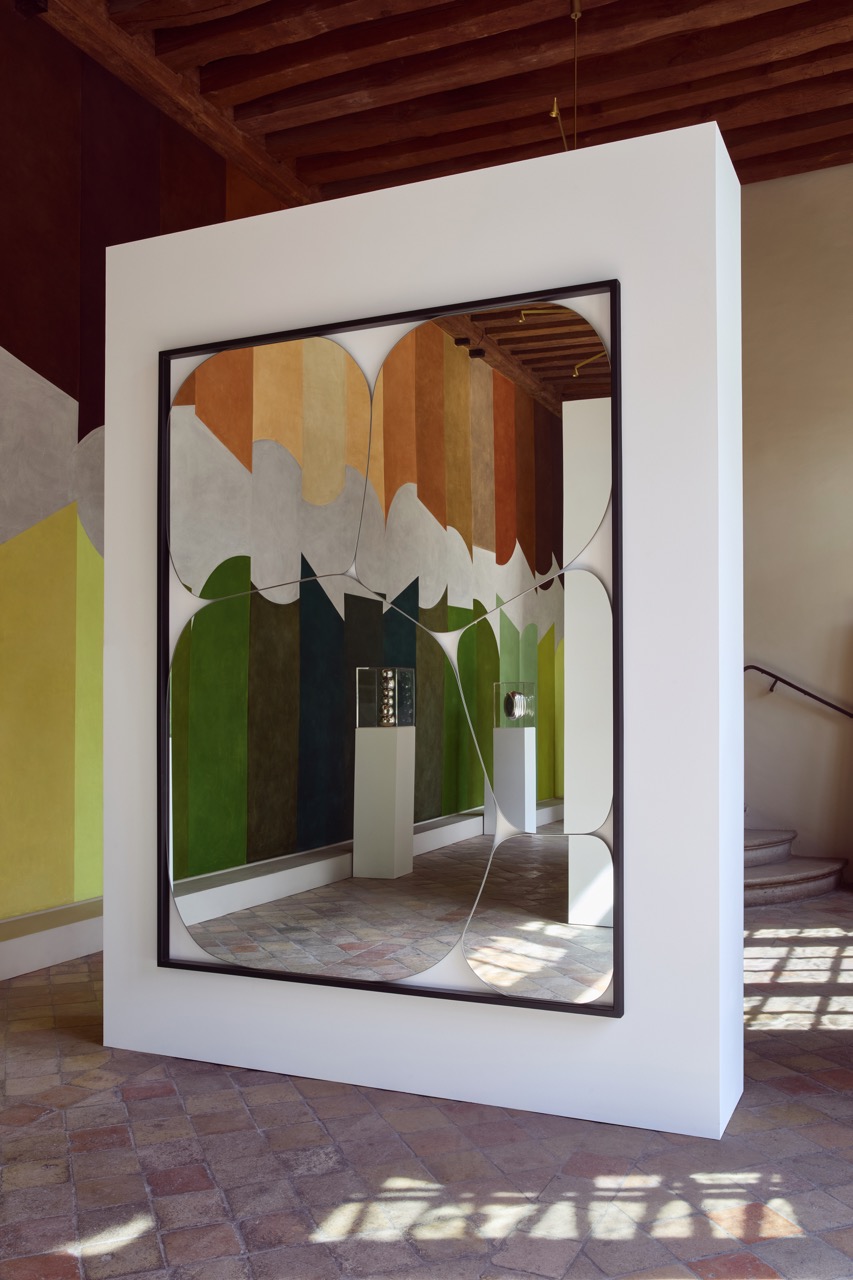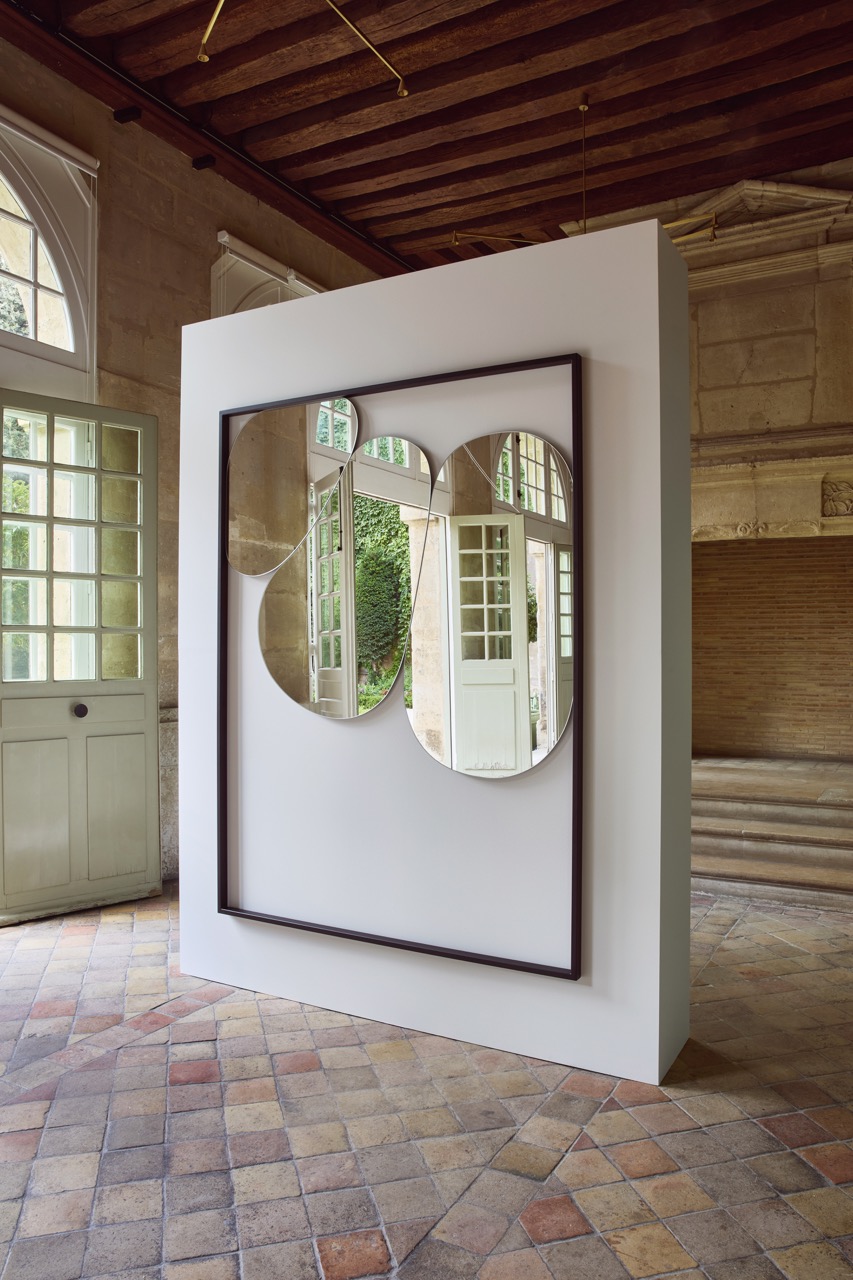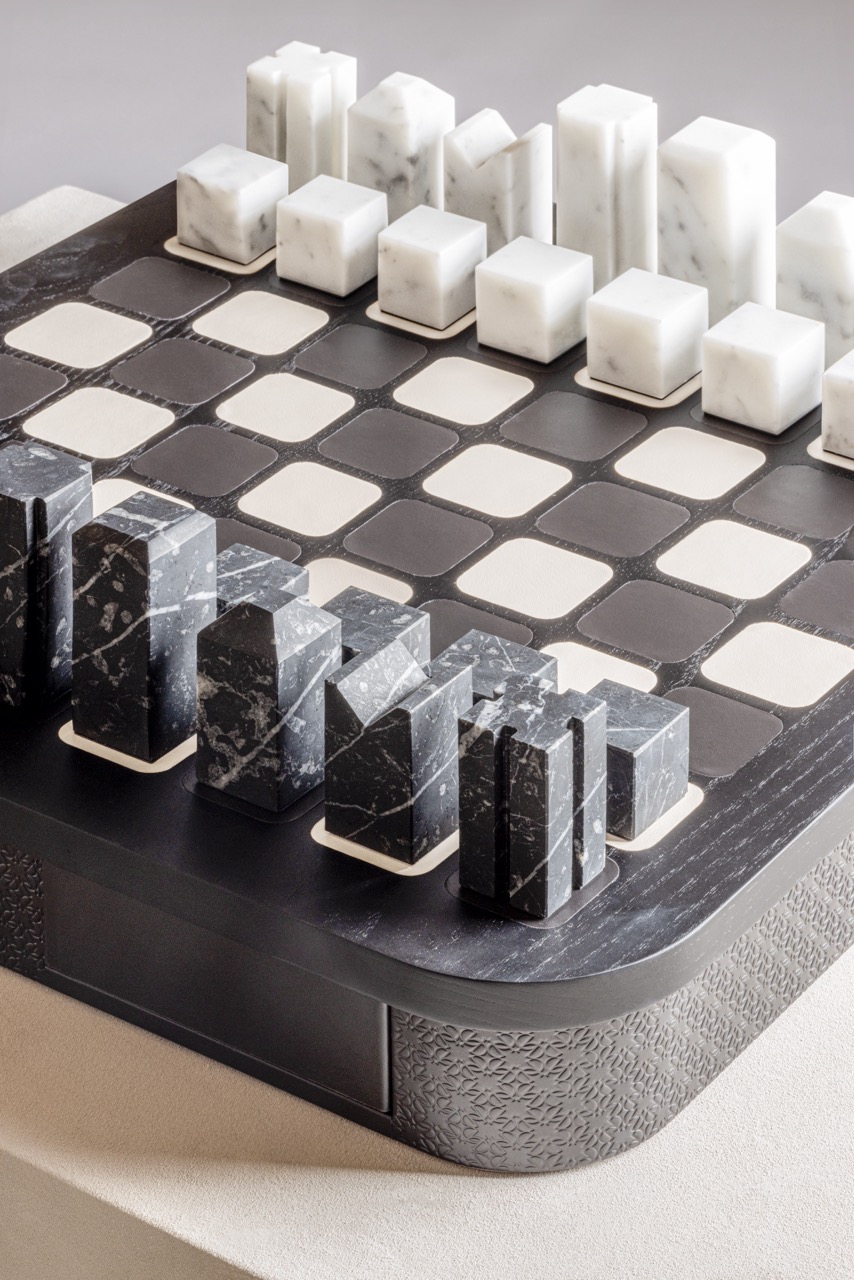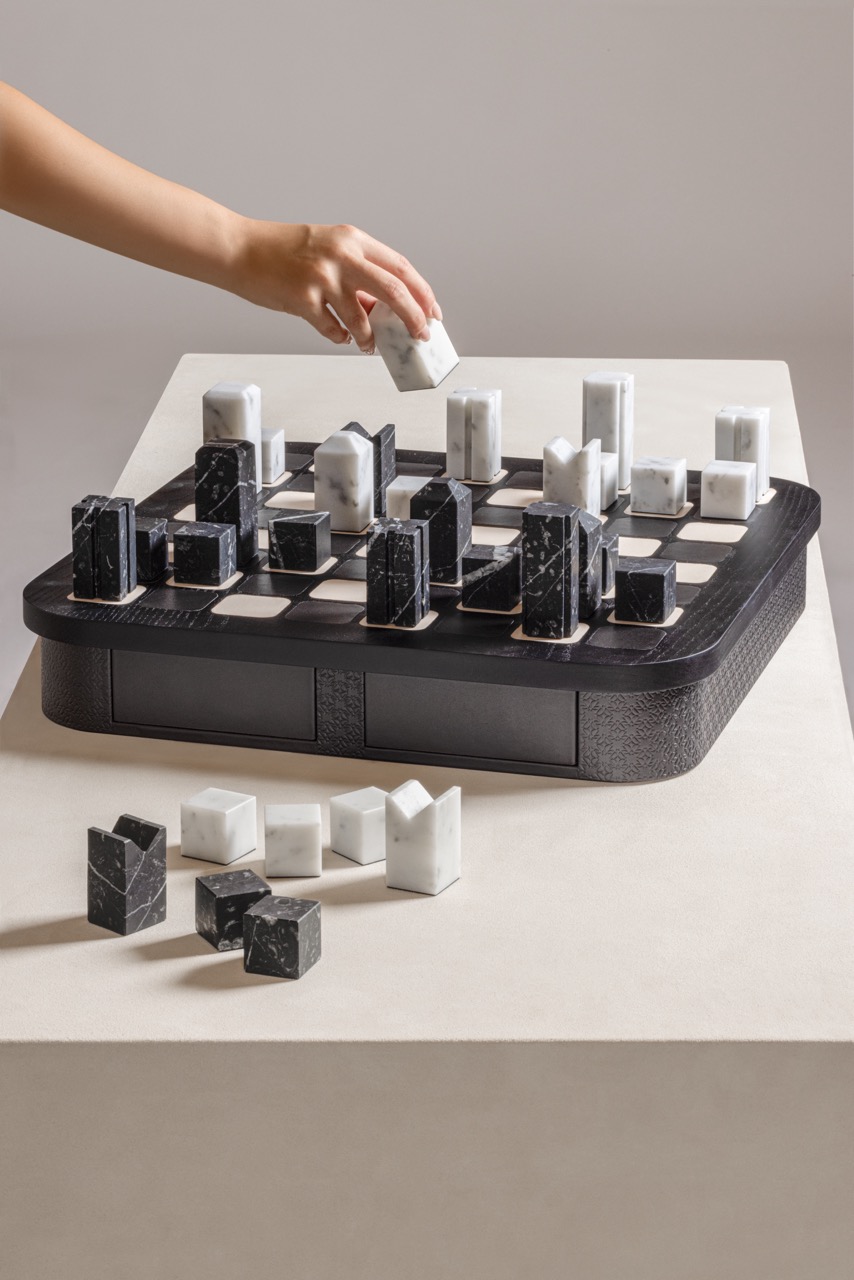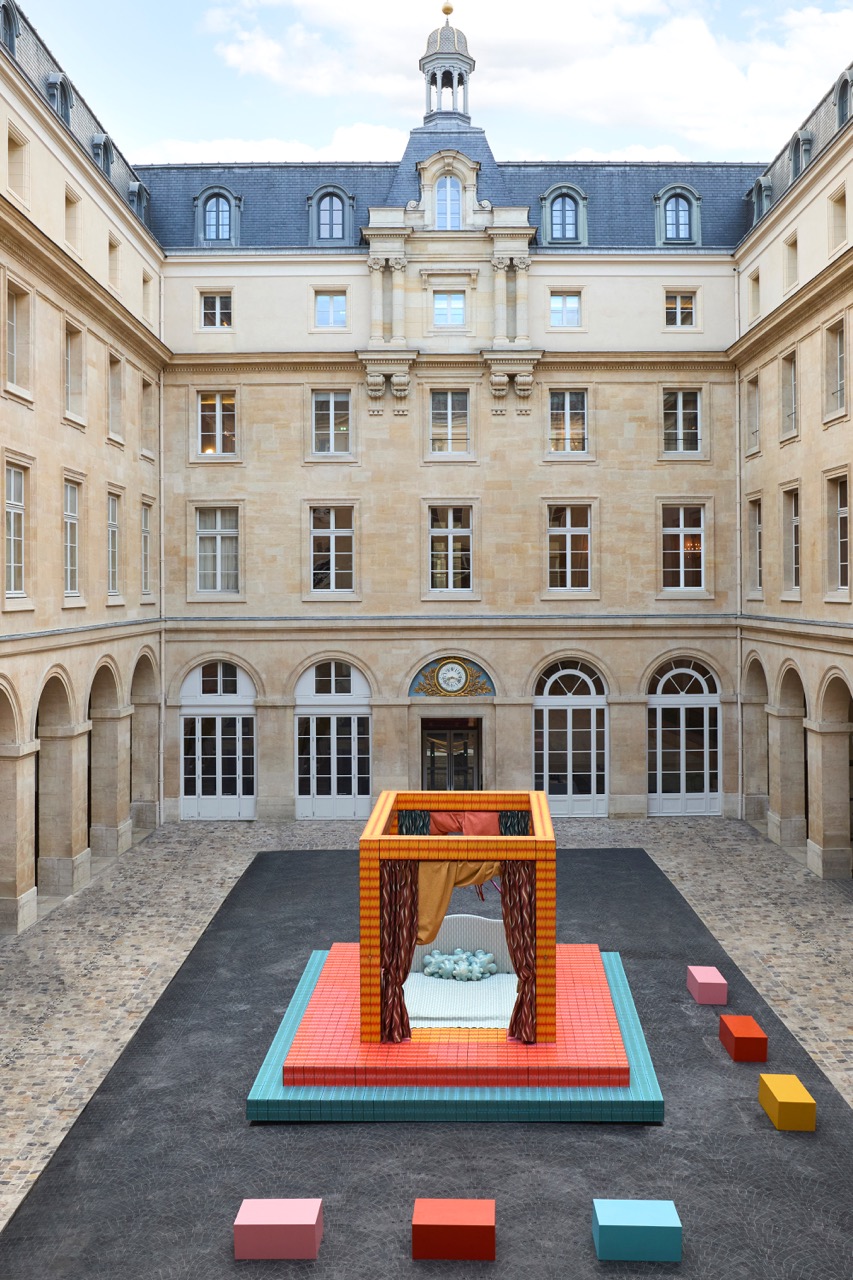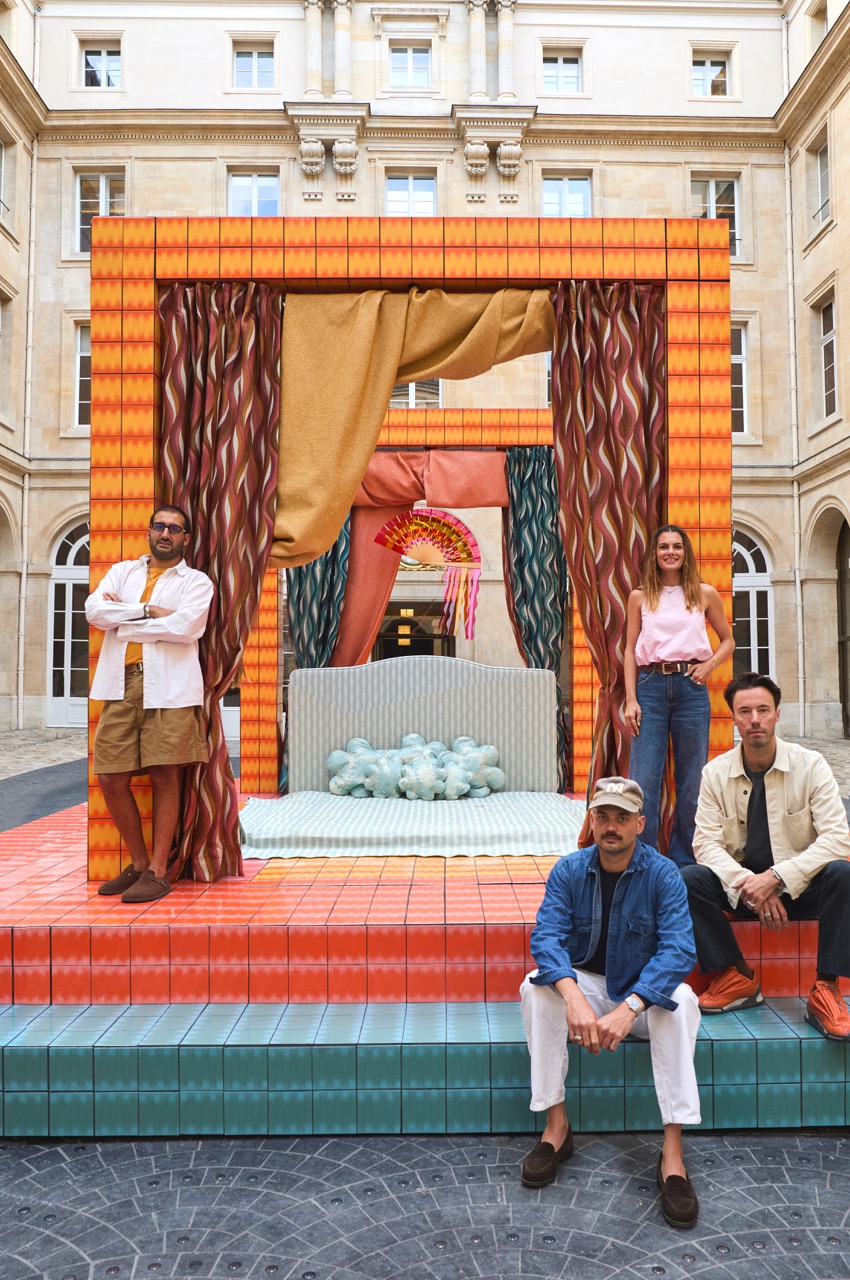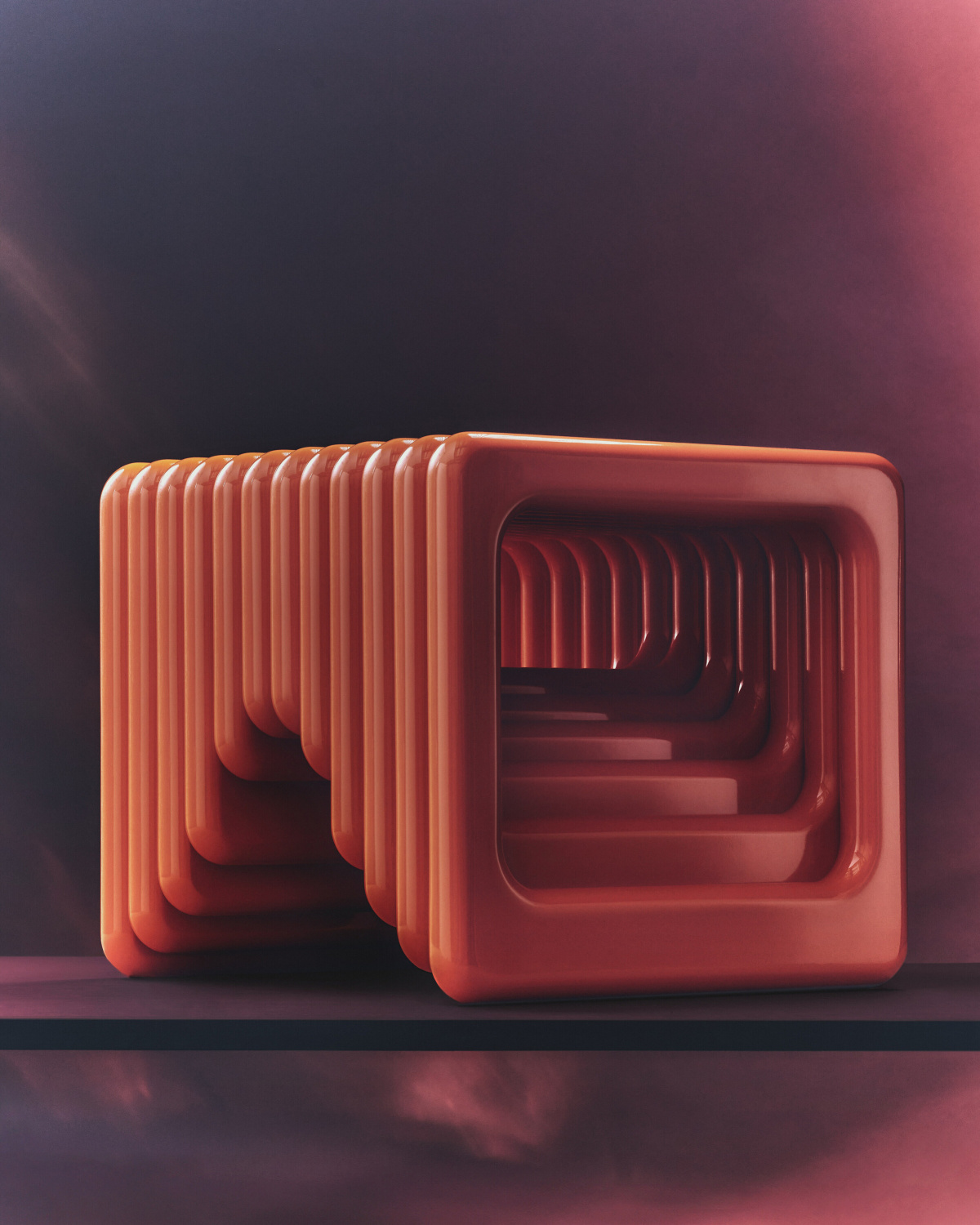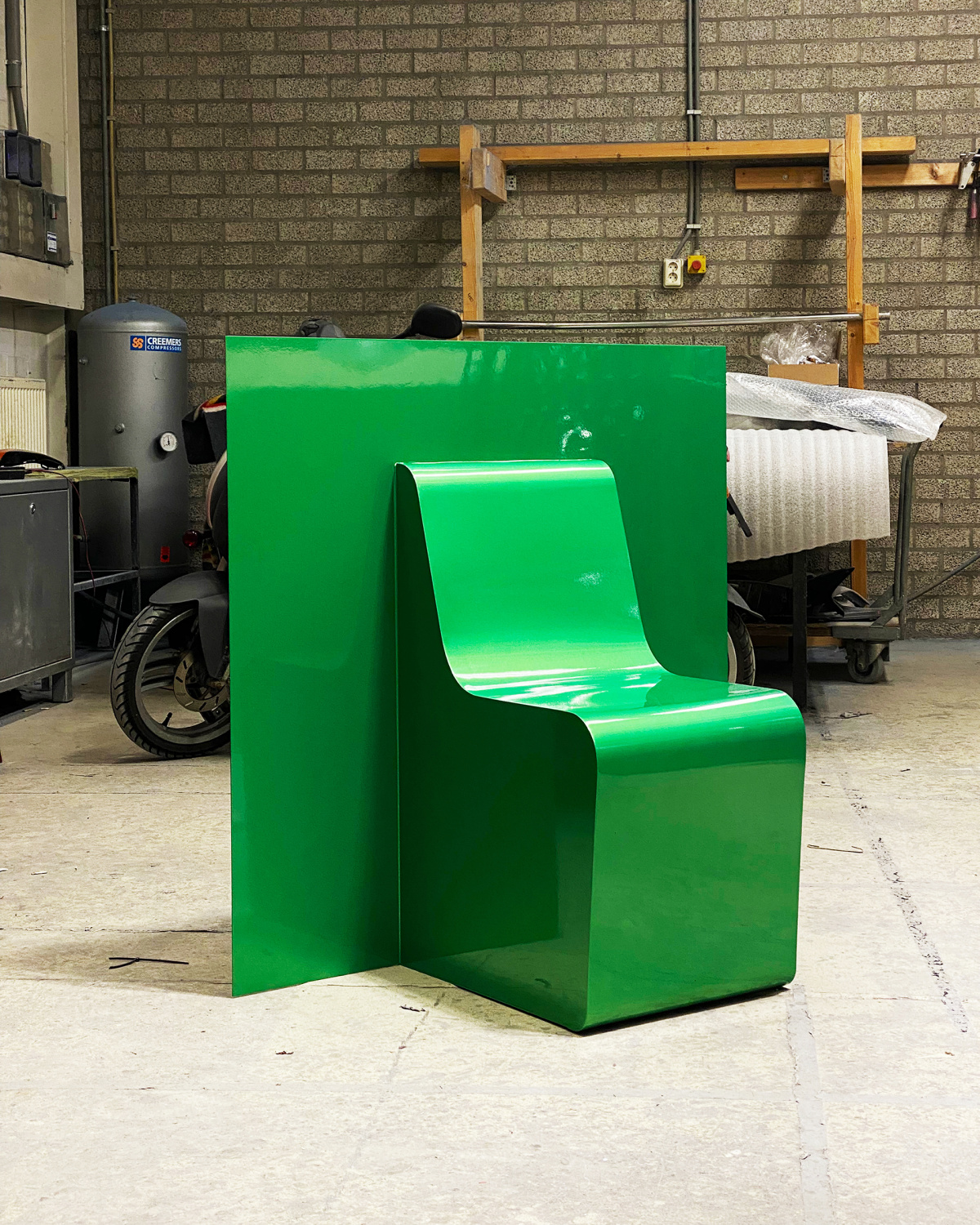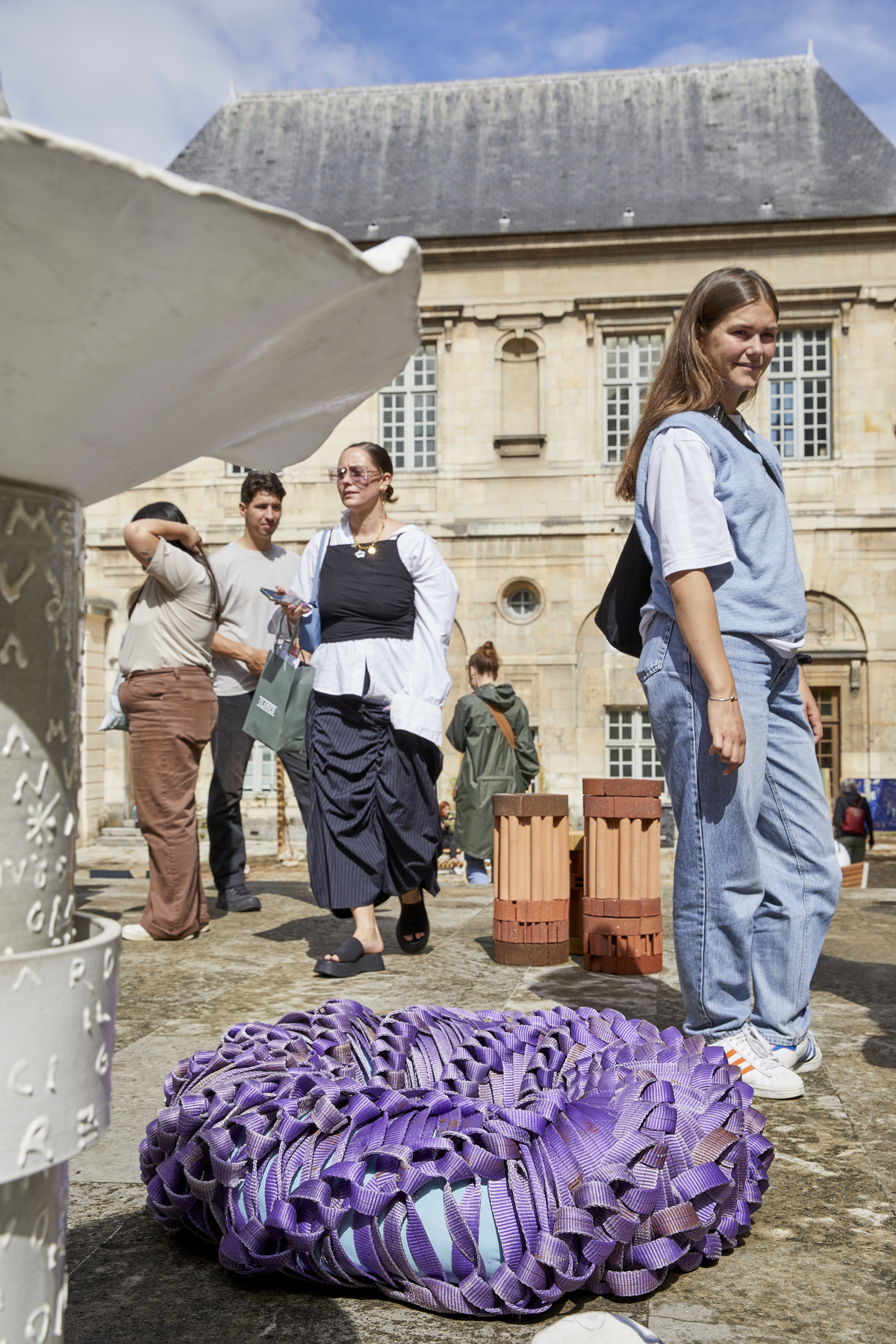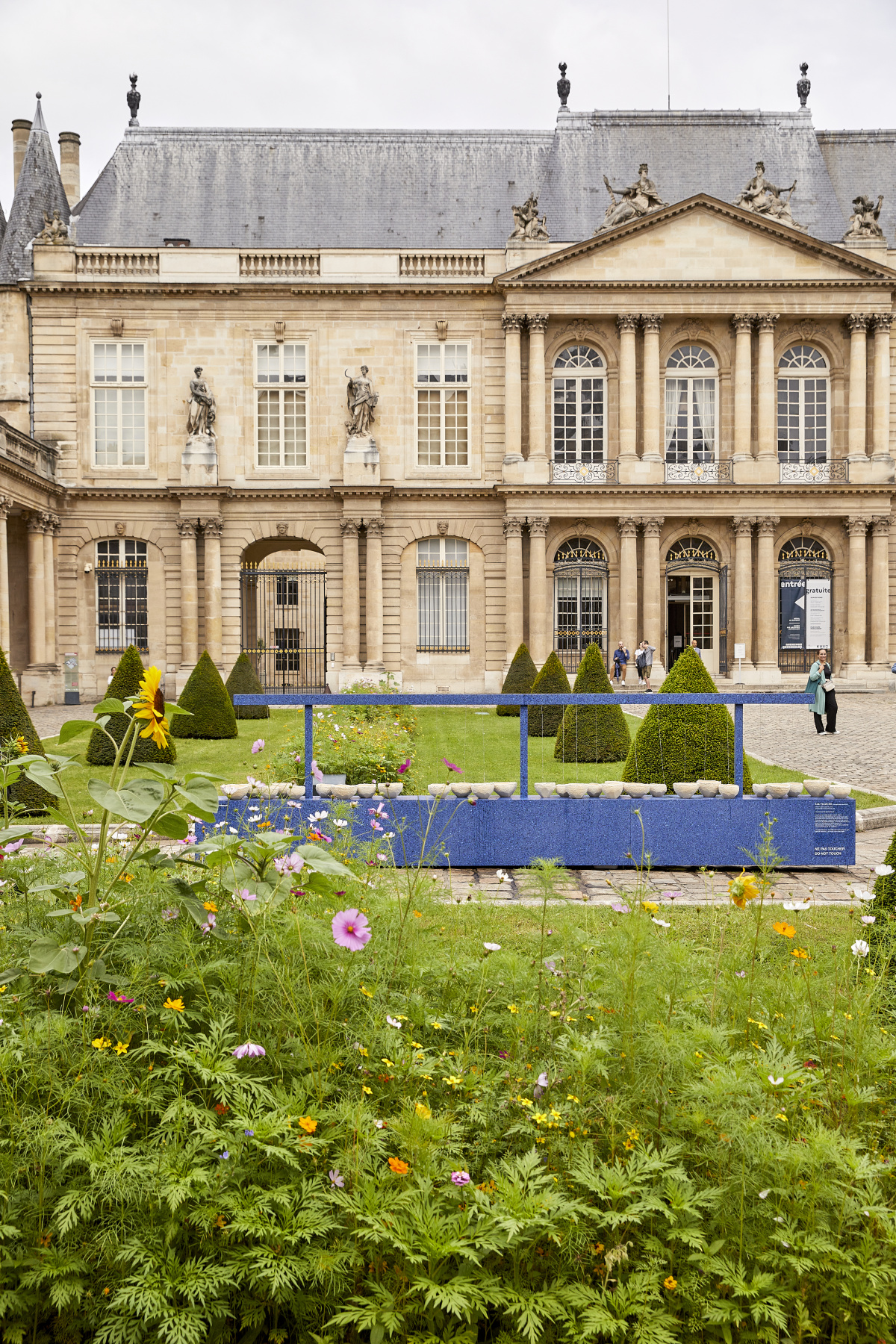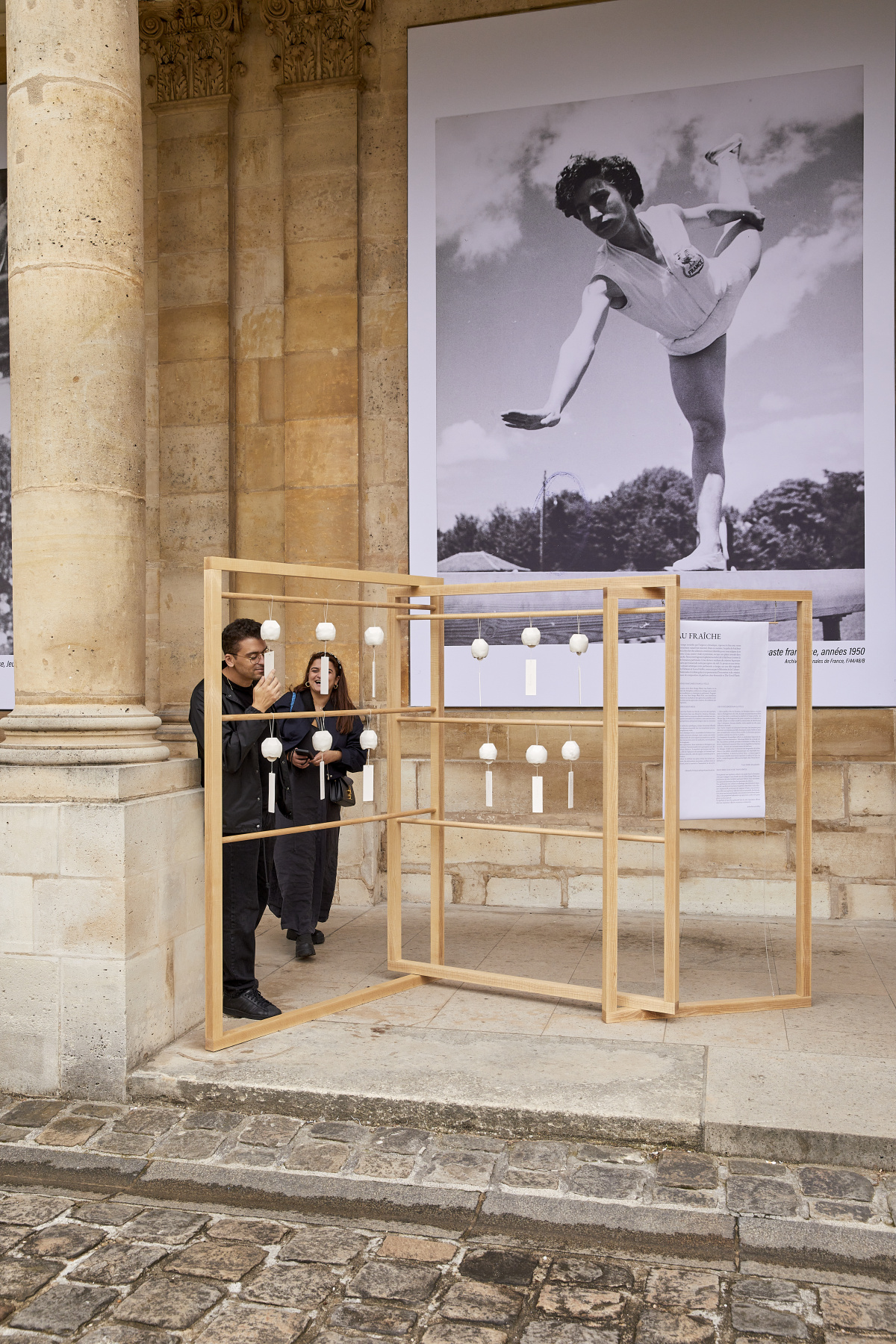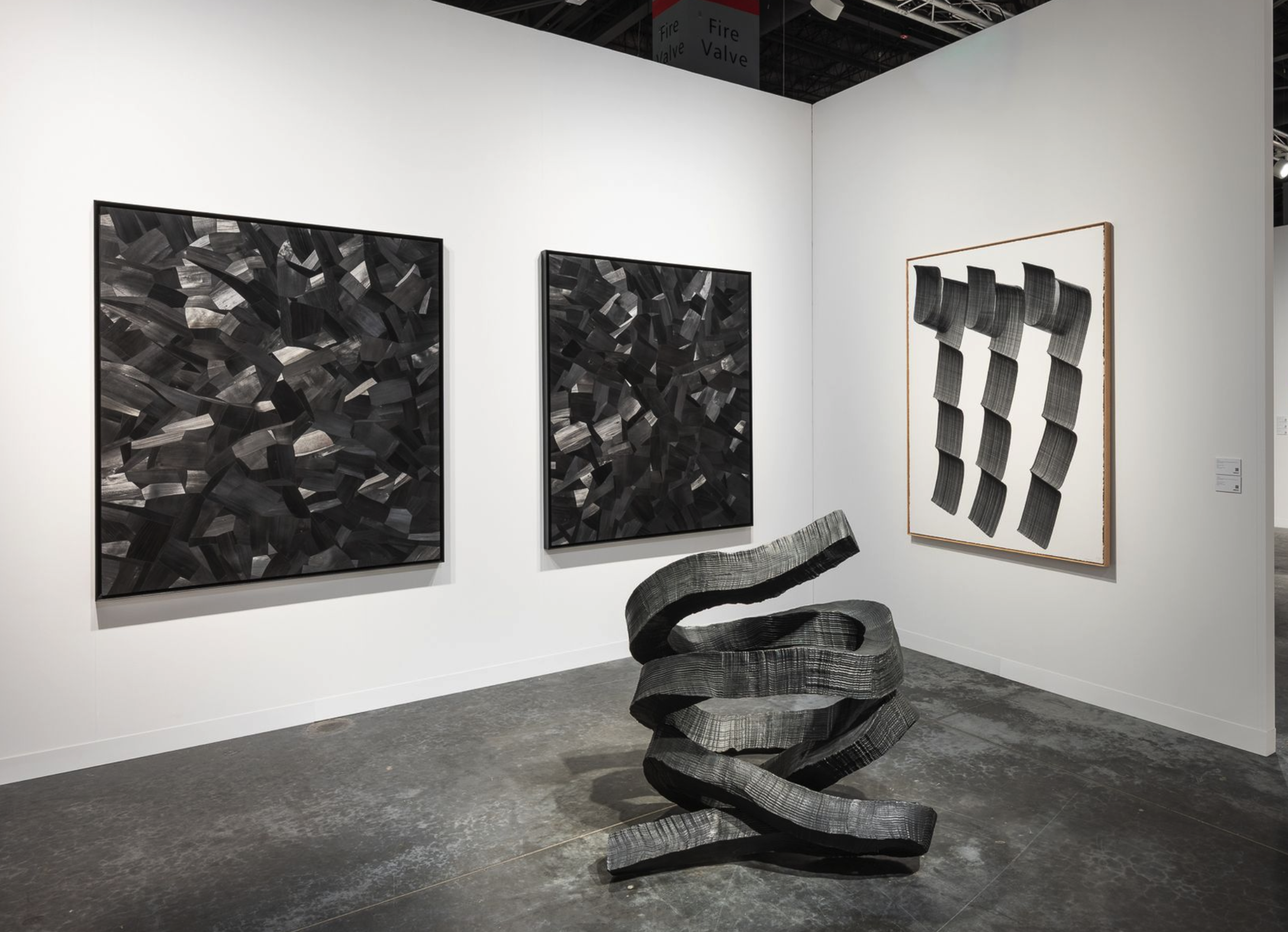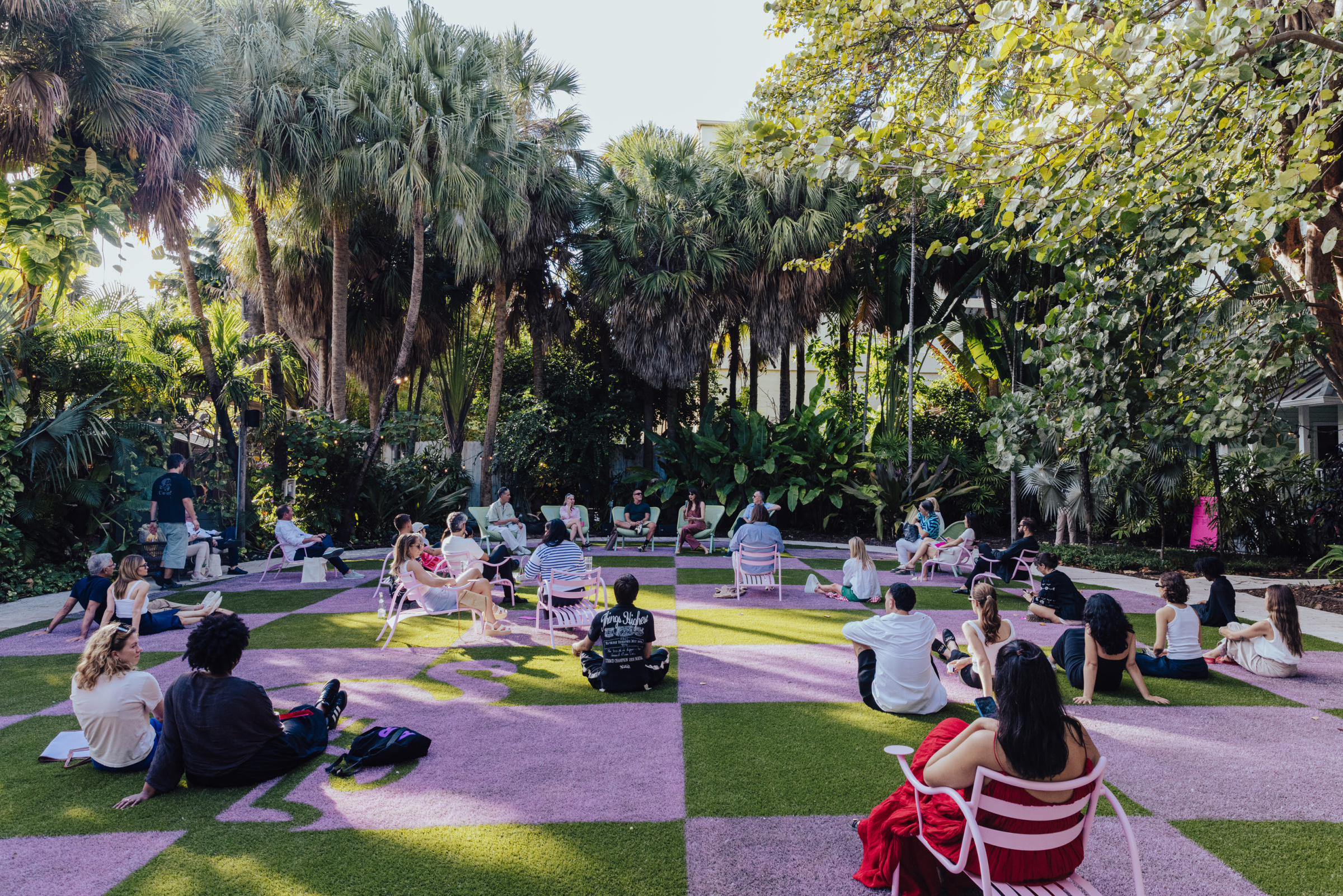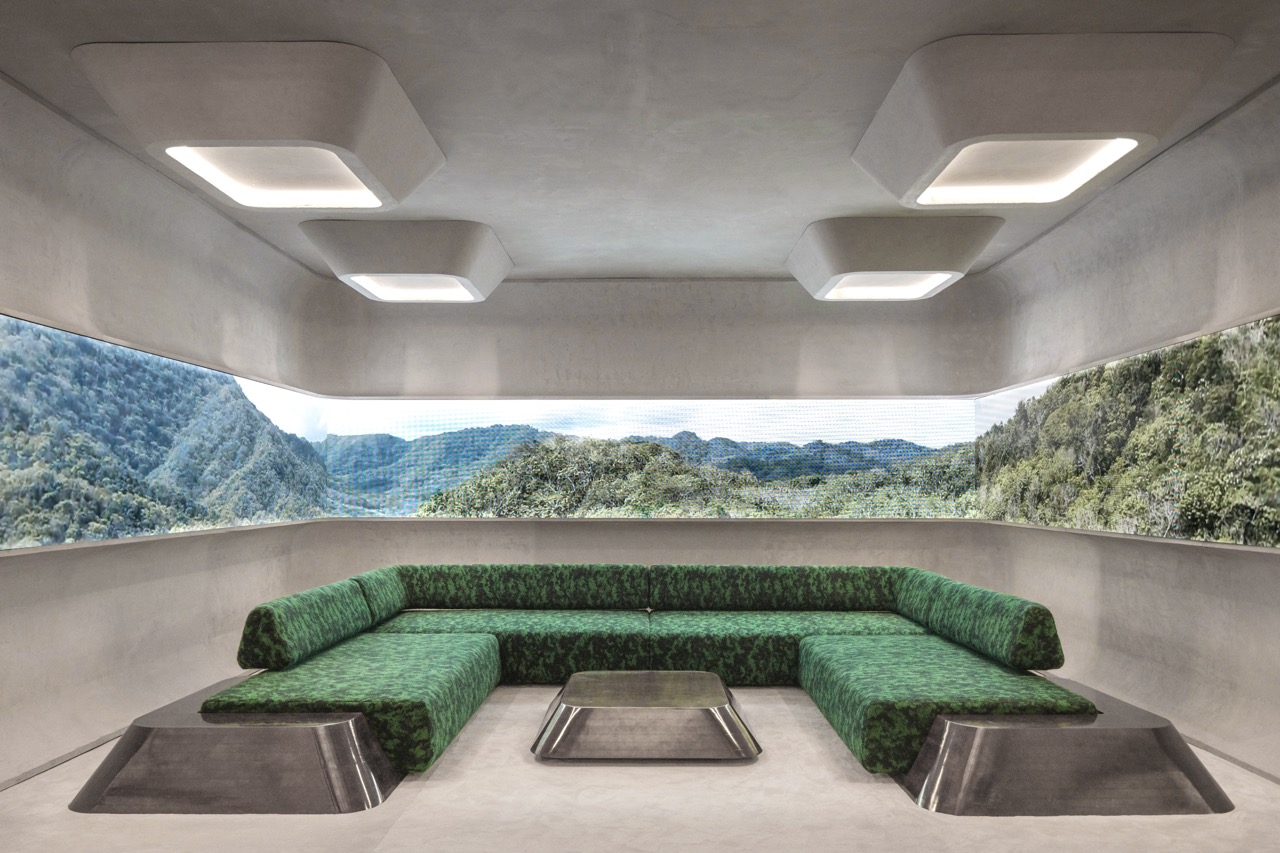Maison&Objet, the renowned Parisian trade fair for design, decoration, and lifestyle, wrapped up its September 2024 edition this month, marking its 30th anniversary. The show maintained its reputation for delivering premium curation and creative inspiration, hosting nearly 54,000 professionals who spent time at the fair and through the city to experience the annual Paris Design Week exhibitions.
The show hosted 2,300 brands, a notable decline largely due to concerns surrounding the Olympic Games. However international participation remained robust, with 58% of exhibitors coming from abroad and 27% being new brands. Visitors from India, the US, and the Middle East remained steady, while European countries like Belgium and Germany led attendance.
Elizabeth Leriche and François Delclaux curated the recurring “What’s New?” exhibit that forecasts decor and retail trends and highlights industry best practices. Lionel Jadot, the Designer of the Year, presented an innovative zero-waste vision for future hotel design (complete with a live DJ, in true European fashion).
With the buzz of Paris Design Week looming—and thousands of exhibitions and events ready to take over the city—The Paris Society threw out a suggestion I couldn’t resist: “Why not escape for a night at our new luxury hideaway to recharge?” And just like that, my week kicked off not in the heart of Paris, but with a blissful hour-long detour to the French countryside, where the chaos of design week seemed like a distant dream.
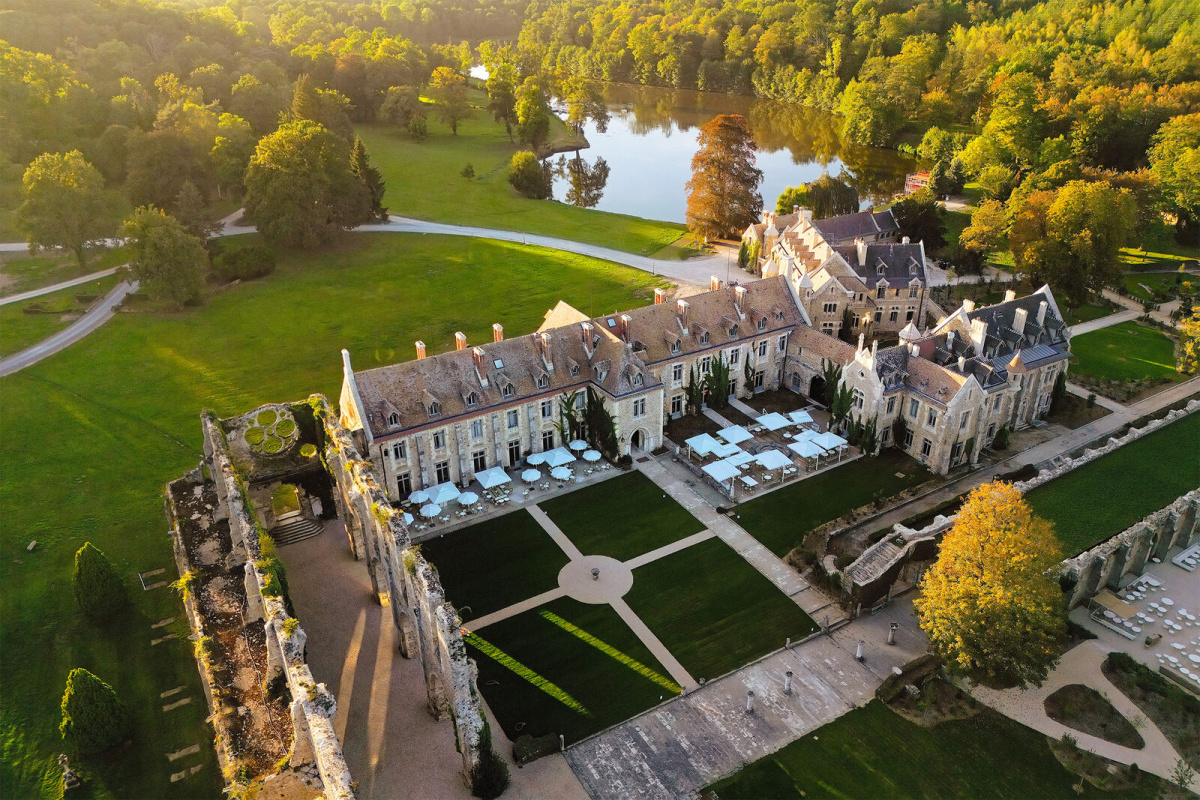
The Abbaye des Vaux de Cernay began life as a monastery in the 12th century. Built in the Forest of Rambouillet just outside of Paris, the 185-acre space is now a luxury hotel. Photo courtesy Abbaye des Vaux de Cernay
A French Abbey’s Elegant Revival as a Countryside Retreat
The Abbaye des Vaux de Cernay began life as a monastery in the 12th century. Built in the Forest of Rambouillet just outside of Paris, the former Cistercian abbey was abandoned during the French Revolution and revived by Baroness Charlotte de Rothschild in the late 19th century, who, using her family’s banking fortune, transformed it into a stunning estate for epic parties and hosting A-list guests, (Chopin was a regular—his piano remains in one of the lounges.)
- The Abbaye des Vaux de Cernay was revived by Baroness Charlotte de Rothschild in the late 19th century, who transformed it into a stunning estate for epic parties and hosting A-list guests. Chopin was a regular—his piano is pictured in this lounge.
- Le Réfectoire des Moines restaurant is a space that channels the magical allure of Hogwarts. Photos by Chris Force
The estate changed hands many times before Laurent de Gourcuff, founder of Paris Society, invested $65 million to restore the buildings, modernize the infrastructure, and bring the estate back to life as a luxury retreat. Designer Cordelia de Castellane, artistic director of Dior Maison, infused the interiors with an impeccable French-British country manor style that nods to both Downton Abbey and the less magical aspects of Hogwarts (there are no moving staircases or talking paintings but plenty of epic rooms and fireplaces).
- Under the talented guidance of Cordélia de Castellane, who has imagined the hotel’s décor down to the last detail, the estate turns classic hotel codes on their head and forges deeper bonds with its guests.
- The hotel’s rooms and suites succeed in immersing guests in their dream country home. The walls are adorned with original fabrics and antique or custom-designed furniture. Photos by Chris Force
I explored the sprawling property on one of their branded bicycles, touring around the lake dotted with paddled boats, tennis courts, an unusual octagonal swimming pool, an absolutely over-equipped kids club and gaming room, a movie theater, and a very nicely scented Tata Harper spa. The hotel’s lounges and bars were all tastefully outfitted with vintage books and attentive staff.
- In the heart of the Abbey, the James’ bar, a tribute to the brother of the Baroness de Rothschild, is one of the beating hearts of the estate, from morning to night and in all seasons.
- The hotel’s lounges and bars were all tastefully outfitted with vintage books and attentive staff. Photos by Chris Force
The next morning my van arrived, and my leisurely pastoral strolls would be replaced by the buzzing halls of Maison&Objet.
- Frederik Weber and Gustav Dupont of Frederik Gustav.
- Frederik Gustav’s “High Wire” installation, inspired by public electrical cables, invites interaction from viewers who experience a small electric thrill (aka, a mild electrocution) when touching the illuminated panels. Photos by Chris Force
Rising Talent Awards
My tradition at Maison&Objet is to head straight to the Rising Talent Awards, an area designated for designers under 35 years old and having established their studios within the past five years. This show focused on the Nordic nations: Sweden, Denmark, Norway, Finland, and Iceland.
The highlight of the awards was the work of Frederik Weber and Gustav Dupont of Frederik Gustav. Their “High Wire” installation, inspired by public electrical cables, invites interaction from viewers who experience a small electric thrill (aka, a mild electrocution) when touching the illuminated panels. The duo’s design stays true to Danish traditions while revealing the usually hidden mechanisms of their pieces, making functionality a visible part of the aesthetic.
- The SWIING light is the latest creation from Tristan Lohner. A long-time collaborator with Fermob, Tristan has a knack for crafting pieces that are not only functional but loaded with personality. Photo by Chris Force
- The lamp’s design, with its smooth, feminine lines, mimics the rhythm of a dance, a nod to the name itself. Tristan’s signature attention to detail is apparent in the opal glass-like diffuser casting a soft, intimate glow. Photo by Nicolas Matheus, courtesy Fermob
The SWIING Light by Tristan Lohner for Fermob
The SWIING light is the latest creation from Tristan Lohner. A long-time collaborator with Fermob, Tristan has a knack for crafting pieces that are not only functional but loaded with personality.
SWIING was created with an integrated tilt switch—a clever touch typical of Tristan’s user-focused approach that took a little over two-and-a-half years to perfect. The result is a light that, with a simple tilt, turns on or off, transforming everyday interaction into an experience. (Fermob gifted me one, and it’s become an instant hit with my kids who love to tilt it off and on repeatedly.)
The lamp’s design, with its smooth, feminine lines, mimics the rhythm of a dance, a nod to the name itself. Tristan’s signature attention to detail is apparent in the opal glass-like diffuser casting a soft, intimate glow.
Fermob also announced their acquisition of the brand Tiptoe, who we first reported on in 2021. As part of the acquisition American customers can expect to see more of the sustainably-driven brand’s work.
- Designer Paul Cocksedge’s “Squeeze” installation at the Orangerie and garden of the Hôtel de Sully was another favorite, blending science and aesthetics in a visually striking way.
- Paul’s vision for “Squeeze” was to transform the everyday act of looking into a mirror into something magical. The installation played on the modern obsession with capturing images and selfies–through here, the only “screens” were the reflective surfaces. Photos courtesy Maison&Objet
Paul Cocksedge’s “Squeeze” Installation with Deknudt Mirrors
Paul Cocksedge’s “Squeeze” installation at the Orangerie and garden of the Hôtel de Sully was another favorite, blending science and aesthetics in a visually striking way. His compressed balloon mirrors, set against the classical architecture, created an optical illusion that left many visitors in awe.
Paul’s vision for “Squeeze” was to transform the everyday act of looking into a mirror into something magical. The installation played on the modern obsession with capturing images and selfies–though here, the only “screens” were the reflective surfaces. He also invited guests to engage with him more directly. During the week, Paul was seated on a chair in the garden of the Hôtel de Sully with another chair facing him. He agreed to meet and chat with anyone who sent him a lightbulb emoji on Instagram along with a few introductory sentences.
paulcocksedgestudio.com, deknudtmirrors.com
- The Giobagnara x ELIE SAAB collection was introduced at Maison&Objet, including a range of small gift items reflecting ELIE SAAB’s luxe style and clean silhouettes.
- One standout piece was the collection’s Monogram Chess Set, featuring a wooden and leather base with chess pieces made from white carrara and black marquina marble. Photos courtesy Giobagnara
Giobagnara x ELIE SAAB collection
The Giobagnara x ELIE SAAB collection was also introduced at Maison&Objet, showcasing a blend of Italian craftsmanship and understated elegance. The collection included a range of small gift items—boxes, picture frames, and decorative objects—each reflecting ELIE SAAB’s luxe style and clean silhouettes. The color palette moves from neutral shades to earthy tones, with touches of turquoise for a fresh, modern twist.
One standout piece was the collection’s Monogram Chess Set, featuring a wooden and leather base with chess pieces made from white carrara and black marquina marble. Monogram Valet Trays were also available in a variety of shapes and sizes featuring the ELIE SAAB monogram.
- At Hôtel de la Marine, Uchronia Studio exhibited a grandiose four-poster bed on a ceramic platform, transforming the courtyard into a public square.
- The installation, titled Universe Uchronia, featured ceramic tiles in colors inspired by the quartermasters’ dwellings and was adorned with an exuberant display of drapes and cushions. Photos by Felix Dol Maillot, courtesy Maison&Objet
Universe Uchronia at Hôtel de la Marine
At Hôtel de la Marine, Uchronia Studio exhibited a grandiose four-poster bed on a ceramic platform, transforming the courtyard into a public square. The installation, titled Universe Uchronia, featured ceramic tiles in colors inspired by the quartermasters’ dwellings and was adorned with a display of drapes and cushions.
Tréca Paris, a French brand offering artisan handmade beds, also sponsored the installation in conjunction with Tonester Paints, who curated a palette inspired by the rich hues of the Hôtel de la Marine. Tréca handcrafts every piece in their historic workshops, where the art of “savoir-dormir à la française” (the French art of sleeping) comes to life. The brand plans on opening its first US-based showroom in September.
Tonester’s bold color choices were pulled from the rich tones of the hotel’s 18th-century rooms—think vibrant reds and striking turquoise blues—giving the whole setup a fresh, modern edge while still nodding to its historical roots. The space also played with contrast, pairing plush trimmings and cushions with sleek ceramic tiles from Dutch brand Palet.
uchronia.fr, treca.com, palet.shop
- SENIMO is a carpenter and designer who makes a limited number of each of his pieces. This piece, titled SHARPEI, is a stool made of wood with a patent orange finish. Photo courtesy SENIMO
- Spatial Designer Lucas Sabas Cid debuted his Thermoforming Chair during Paris Design Week. Crafted from steel and finished in a bold green, the chair’s signature feature is its distinctive curvature. Photo courtesy Lucas Sabas
Paris Factory, ESPACE COMMINES
Lucas Sabas, a spatial designer from a Parisian suburb and the fifth generation in a family of mechanics, debuted this Thermoforming Chair during Paris Design Week. Crafted from steel and finished in a bold green, the chair’s signature feature is its distinctive curvature. Many of Lucas’ creations incorporate deconstructed car parts, a nod to his familial roots in mechanics. He seeks to challenge and reinterpret the conventional aesthetics, techniques, and knowledge tied to automotive craftsmanship through his work.
SENIMO is a carpenter and designer who makes a limited number of each of his pieces. The simplicity and repetition of the curved shapes are the base to explore harmonious volumes and an exceptional range of colors. The main piece within his current collection, titled SHARPEI, is a stool made of wood with a patent orange finish. It also transforms into a coffee table.
- At the Bibliothèque Historique de la Ville de Paris, street furniture was reimagined with a focus on climate change.
- In the upper courtyard designers Jean-Baptiste Durand, Prisca Razafindrakoto, and Simon Geringer reimagined the classic village square with a twist—blending design, graphics, and art into a modern take on this timeless urban space. Photos courtesy Maison&Objet
Village Palace at Bibliothèque Historique de la Ville de Paris
At the Bibliothèque Historique de la Ville de Paris, street furniture was reimagined with a focus on climate change, featuring designs like sun shelters, benches, and compost containers. In the lower courtyard, the wood association FIBOIS presented the Bois Français & Design 2024 competition winners, featuring canopies, benches, and compost bins. In the upper courtyard, designers Jean-Baptiste Durand, Prisca Razafindrakoto, and Simon Geringer reimagined the classic village square with a twist—blending design, graphics, and art into a modern take on this timeless urban space.
jeanbaptistedurand.com, priscarazafindrakoto.com, simongeringer.com
- At the Hôtel de Soubise, designer Lucas Huillet and perfumer Alexandre Helwani debuted “Eau Fraîche,” a ceramic fountain filled with scented water that created a refreshing illusion of coolness.
- The installation encouraged visitors to reflect on the issue of global warming and consider alternative cooling solutions, presenting fragrance as a creative substitute for air conditioning. Photos courtesy Maison&Objet
Eau Fraîche at the Hôtel de Soubise
At the Hôtel de Soubise, designer Lucas Huillet and perfumer Alexandre Helwani debuted “Eau Fraîche,” a ceramic fountain filled with scented water that created a refreshing illusion of coolness. The installation encouraged visitors to reflect on the issue of global warming and consider alternative cooling solutions, presenting fragrance as a creative substitute for air conditioning. It was designed not only to be a sensory experience, but to ignite conversations about climate change.
Crafted from Polygood panels made from 100% recycled and recyclable plastic, the fountains showcased a deep blue sapphire terrazzo pattern that repurposed post-consumer and post-industrial waste. Lucas’ handmade ceramic bowls collected the water to underscore the importance of resource preservation.
lucashuillet.com, theperfumechronicles.com, polygood.com
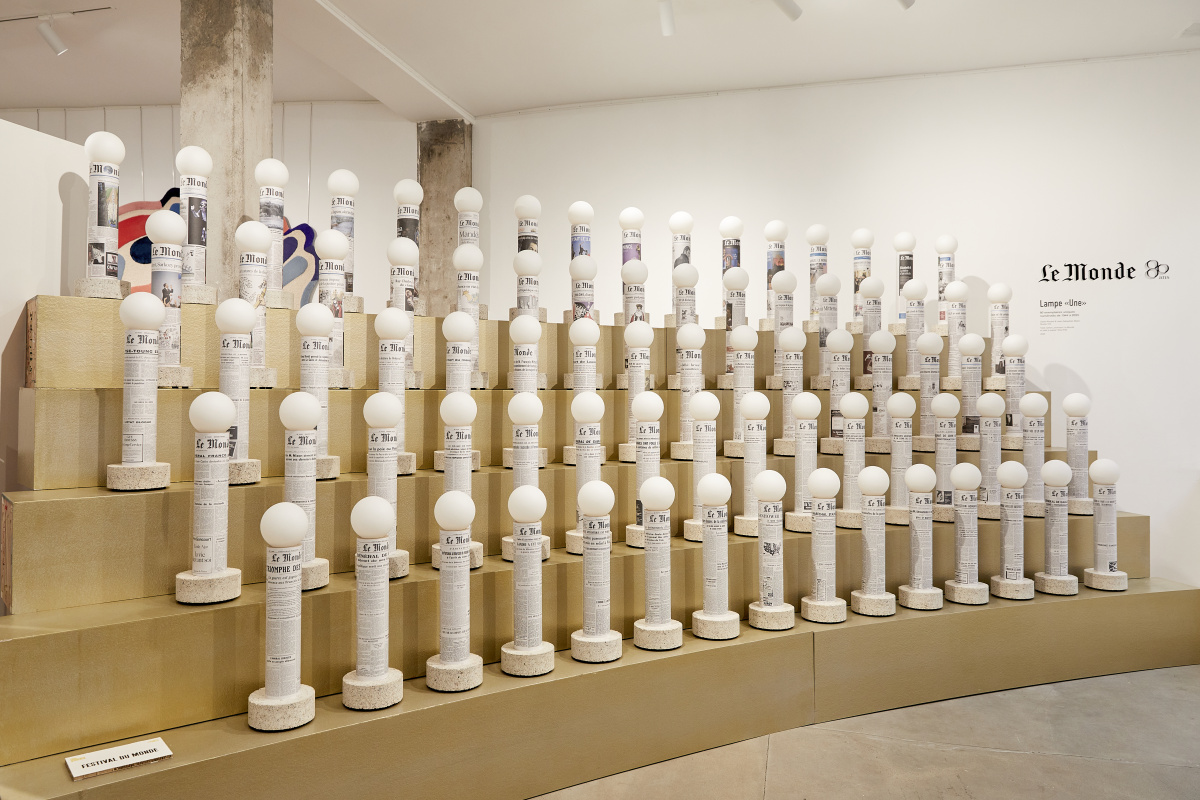
For the 80th anniversary of France’s Le Monde newspaper, designers Claire Renard and Jean-Sébastien Blanc of Studio 5.5 created 80 unique lamps made from upcycled newspaper waste and recycled TetraPak packaging, each featuring a historic front page from 1944 to 2023. Photo courtesy Maison&Objet
Festival du Monde
For the 80th anniversary of France’s Le Monde newspaper, designers Claire Renard and Jean-Sébastien Blanc of Studio 5.5 created 80 unique lamps made from upcycled newspaper waste and recycled TetraPak packaging, each featuring a historic front page from 1944 to 2023. For the past three years, Claire and Jean-Sébastien have been dedicated to upcycling, designing the scenography for the Festival du Monde using waste generated from the newspaper’s printing process.
This collection, showcased in a circular light installation during Paris Design Week, will later be exhibited at the Festival du Monde in the 13th arrondissement.
The next edition of Maison&Objet will take place January 16 to 20, 2025. Find tickets and exhibitor information at maison-objet.com
